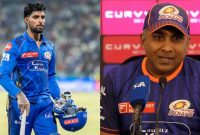Ever since Nigeria won their first Africa Cup of Nations title in 1980, the Super Eagles’ No.11 jersey has secured an esteemed place in the country’s football legacy. This revered garment has been sported by numerous Nigerian stars across various positions—from skillful wide players to dynamic forwards. In this piece, PETER AKINBO traces the lineage of talented athletes who’ve proudly borne the historic number eleven for the national side since that landmark victory.
Adokie Amiesimaka
(1970s–1980s)
Among the first to wear the No. 11 jersey, Amiesimaka stood out due to his remarkable speed and exceptional dribbling skills. He played an essential role with the Nigerian team that won the Africa Cup of Nations in 1980. Throughout his career, he participated in 39 national games, scoring five times, and also competed in the 1980 Olympics and qualified rounds for both the 1978 and 1982 FIFA World Cups.
Felix Owolabi (1980–1981)
During Nigeria’s golden period in the early 1980s, Owolabi temporarily sported the No.11 shirt. As a left winger, he was involved with the national team that clinched victory at the 1980 Africa Cup of Nations (AFCON) and had earlier contributed to securing third place in the 1978 tournament. Throughout his career, he made 35 appearances and netted two goals for the Super Eagles.
Henry Nwosu (1980s)
The 1980 AFCON champion Nigerian squad included Nwosu, who was the team’s youngest player. During his time with Nigeria’s Olympic side, he sported jersey number 11 and scored the nation’s sole goal during the 1980 Olympics. Additionally, Nwosu represented his country in four Africa Cup of Nations events (in 1982, 1984, 1988, and 1990) and secured two second-place finishes.
Ademola Adeshina (1989–1990)
A versatile midfielder, Adeshina wore No.11 for a period after previously donning other shirt numbers. He was part of Nigeria’s squads at the 1984, 1988, and 1990 AFCON tournaments, as well as the 1988 Olympics.
Friday Elahor (1991–1992)
During his stint with the national team, Elahor briefly wore the No.11 jersey, occasionally swapping it out for the No.12. In total, he made 14 appearances for Nigeria and managed to score one goal.
Thompson Oliha (1991–1992)
Initially sporting the number 11 during his early days with the national team, Oliha later switched to wearing jersey number 8. He made his first appearance in 1988 and went on to collect 31 caps, scoring twice before his unfortunate death.
Golden generation icons
Emmanuel Amunike (1994–1996)
A genuine icon wearing the number 11 jersey, Amunike played a crucial role in Nigeria’s triumph at the 1994 Africa Cup of Nations and found the back of the net during both the FIFA World Cup and the Olympics. He earned the title of 1994 African Footballer of the Year and scored the decisive goal in the 1996 Olympic final. Despite his significant contributions, his international stint was shortened due to injuries; nonetheless, he managed to score 10 times in 28 matches for his country.
Victor Ikpeba (1995–1996)
Another African Footballer of the Year (1997), Ikpeba wore the No.11 jersey during the Olympics and featured at both the 1994 and 1998 World Cups. He scored seven goals in 31 matches and was part of the 1994 AFCON-winning team.
Garba Lawal (1997–2006)
Perhaps the longest-serving No.11, Lawal was a utility player who featured in multiple positions. He played in two World Cups (1998, 2002) and four AFCON tournaments, scoring in three. A 1996 Olympic gold medalist, Lawal wore No.13 in Atlanta but made the No.11 shirt his own for nearly a decade.
Modern era Eagles
Peter Odemwingie (2007–2010)
Odemwingie played a crucial role as an attacker for Nigeria with 65 appearances and 11 goals throughout his career spanning more than ten years. He wore jersey number 11 between 2007 and 2010, participating in four Africa Cup of Nations tournaments and two FIFA World Cups. Notably, he scored against Bosnia during the 2014 tournament.
Nnamdi Oduamadi (2011–2013)
Oduamadi switched among various jersey numbers yet famously sported No. 11 when he delivered an outstanding performance at the 2013 Confederations Cup, scoring three goals against Tahiti.
Mohammed Gambo (2012–2013)
Among the select local-based athletes who received recognition from Stephen Keshi for international duty, Gambo momentarily sported jersey number 11 and competed in the 2013 FIFA Confederations Cup.
Still soaring
Moses Simon (2015–2017)
In 2015, Simon made his debut and initially sported the number 11 jersey at the beginning of his international journey. He later changed to wearing the number 15, a shirt he still uses today. Recognized for his speed and agility, he stays a crucial offensive choice for Nigeria’s team.
Henry Onyekuru (2016–2022)
After making his debut in 2017, Onyekuru laid claim to the No.11 jersey and kept wearing it regularly whenever he was part of the team. Despite not being a consistent starter, he added to Nigeria’s offensive versatility throughout his time with them.
Victor Moses (2011–2018)
Moses was an outstanding player wearing jersey number 11 for Nigeria, crucially contributing to their victory in the 2013 Africa Cup of Nations. During this tournament, he netted two critical goals against Ethiopia and earned a place in the Best Eleven players list. Prior to his retirement from international soccer, Moses also played in both the 2014 and 2018 FIFA World Cups.
Samuel Chukwueze (2019–present)
Since 2019, the energetic wing player has sported the No.11 jersey with only brief interruptions. He remains an essential component of Nigeria’s attacking lineup, adding creativity and assertiveness when playing wide.
Honourable Mentions (Pre-1980)
Prior to Nigeria securing its maiden AFCON trophy, numerous legends adorned the No. 11 shirt, such as Sam Garba Okoye (68/69), Mohammed Lawal (68/69), Abdul Ganiyu Salami (68/69), Amusah Shittu (60/61), and Asquo Ekpe (60/61).
From Adokie Amiesimaka to Samuel Chukwueze, the No. 11 jersey has always been adorned by players known for their style, talent, and influence. With fresh prospects stepping up, the tradition of Nigeria’s No. 11 shirt endures—a testament to both past glories and future potential.
Provided by Syndigate Media Inc. (
Syndigate.info
).

